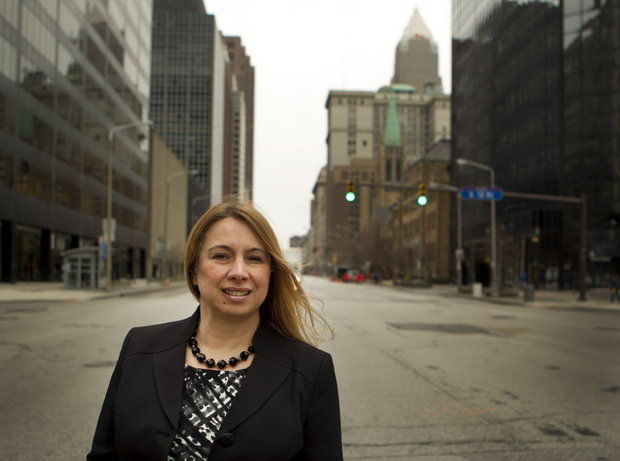Cleveland's metropolitan planning organization was one of those transportation agencies that had never quite gotten over the Eisenhower era. Sure, it threw some money at the transit agency every year. But for the most part, the Northeast Ohio Areawide Coordinating Agency (NOACA) treated its mission as a simple matter of expanding roads to reduce congestion.

This is a common attitude on the part of regional and state transportation agencies, and not without some encouragement by the federal government. But this "business as usual" approach was especially damaging in a shrinking region like Cleveland, where the road network was expanded into ever-more-distant suburbs while the city and inner-ring suburbs hollowed out.
Despite the dynamic of suburban sprawl and urban abandonment that prevailed for decades, NOACA refused to consider how its decisions affected land use. Its erstwhile director, Howard Maier, simply said that the agency wasn't empowered to do land use planning, which was technically correct, but not especially helpful.
NOACA was so notoriously averse to change and ineffectual that it acquired the nickname NO ACTION. Agency employees once even fielded a company softball team by that name. (Full disclosure: I interned there in grad school.)
But as impossible as it seemed even a year ago, things are changing at NOACA. They're changing fast, and for the better. Last year the agency hired a new director, Grace Gallucci, who had been the head of finance for the Chicago Transit Authority. Since the Cleveland native assumed her role at the head of the NOACA, the region agency has adopted a completely different tenor.
“We’re shifting because the times are shifting,” Gallucci recently told local website Freshwater Cleveland. “We’re about thinking about transportation holistically -- not auto, bike, pedestrian or transit, but all of them. How do you give people more choices to get from A to B?”
NOACA is working on a new strategic plan that appears to be premised on the concept of "fix-it-first." The agency's annual summit a few weeks ago was focused on the theme of "multi-modal innovation." Gallucci told attendees that the region needs to shift toward supporting transit, walking, and biking -- and not so much on expanding the road network.
“Our planning efforts can’t be just about pavement and the automobile," Gallucci said at the summit. “We are working toward a greater sense of balance in the region and being responsive to the upcoming generations is important to us. It’s about attracting and retaining our best and brightest by enhancing the livability of our communities and our region.”
Gallucci has also served as chair of the Northeast Ohio Sustainable Communities Consortium, the region's "sustainable communities" planning effort. Her remarks have been in line with that organization's recommendations: a focus on infill development and expanding transit in the city.
That said, NOACA is still governed by a famously parochial board of directors made up of about 50 political leaders from around the region. And any policy changes NOACA institutes will likely take a long time to be felt. After all, we're talking about an agency that's responsible for planning transportation projects on a 30-year time scale.
Even so, this seemingly immovable agency has come a long way in a short time. It's an exciting thing to witness.





